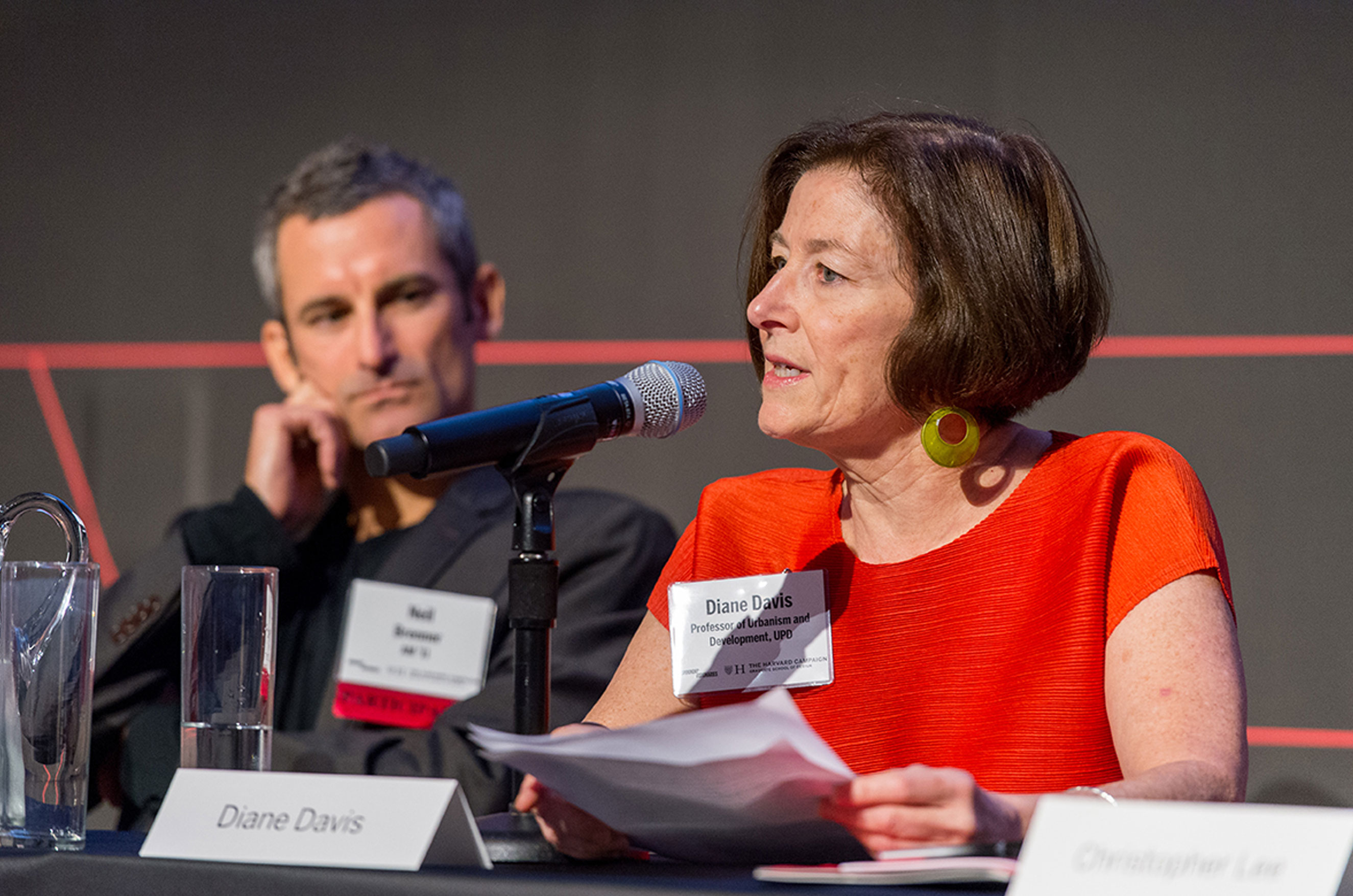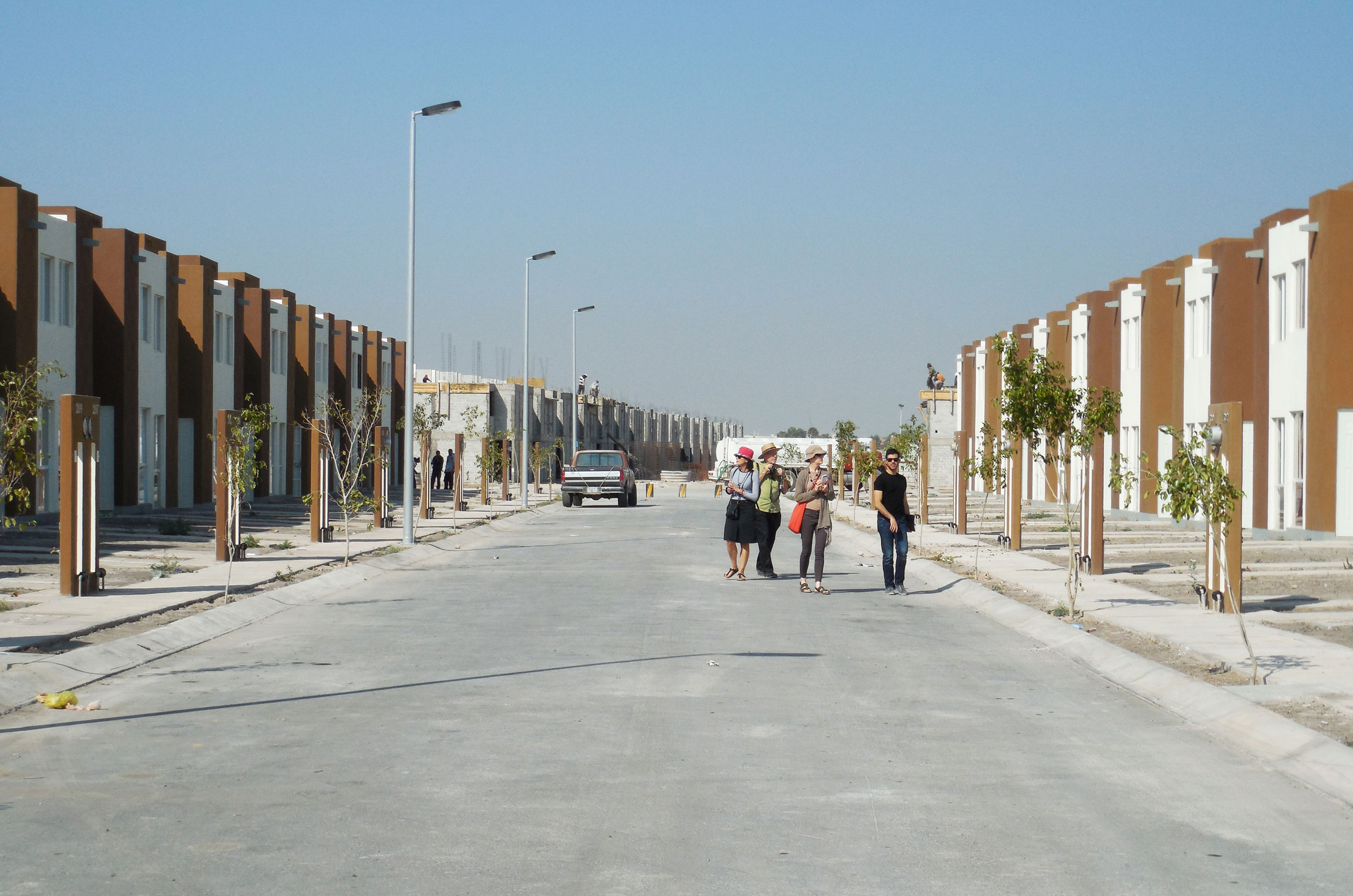Faculty Focus: Diane Davis
This past summer, the GSD announced the appointment of Diane Davis as Chair of the Department of Urban Planning and Design. This new role builds on her experience as the Charles Dyer Norton Professor of Regional Planning and Urbanism, and on her many accolades, which include research fellowships from the John D. and Catherine T. MacArthur Foundation, the Heinz Foundation, and the Ford Foundation, among others.
Davis focuses on urban transformations in the global south for her work, particularly the urban social, spatial, and political conflicts that have emerged in response to globalization, informality, and political and economic violence. For this latest article in a series on GSD Leadership, Davis shares her goals for the department, and its future graduates.
What is your vision for the Urban Planning and Design department?
The Department already made great gains under the leadership of its former chair, Rahul Mehrotra, and my main priority is to continue building on those accomplishments. This will include strengthening connections between the urban planning and urban design programs, offering a curriculum that addresses both global and domestic issues, engaging faculty across the university as much as within the other departments of the GSD, and promoting the significant accomplishments of my colleagues and our students, whether currently enrolled or already graduated. My own vision of the future entails projecting a strong commitment to questions of equity and social justice, themes which have long infused the field of urban planning, but which can and must be more actively engaged by the disciplines of design, landscape architecture, and architecture. I also hope to place more emphasis on the role of research and its value in producing new knowledge that can be used to orient and strengthen the professional planning and design work of our students and faculty.
What is your first order of business as Chair?
My first priority this fall is to make our three new junior faculty members (Sai Balakrishnan, Stephen Gray MAUD ’08, and Andres Sevsuk) central to the life of the department. We are very fortunate to welcome these exceptional young scholars into the program, and I would like to involve them more actively in departmental activities and decision-making. This is important because their relative youth allows them to bring newer and more up-to-date views of the challenges facing planners and designers in today’s world. How cities are transforming and with what implications for the natural and built environment are quite different now than they were even just a decades ago, as are the tools available to address these challenges. We must allow our younger colleagues to help the department anticipate and proactively respond to the contemporary technological, environmental, social, and spatial conditions that are producing contemporary patterns of urbanization.
What do you hope to accomplish in this role?
A high priority for me is to find new ways to link the planning and urban design curriculum so as to make these two program’s relationships to each other more purposeful, more constructive, more exhilarating, and more inspiring. By drawing on each other’s skill sets and working together in a more seamless fashion, planners and urban designers will be in a privileged position to advance the contemporary goals of urbanism. That is, they will be better positioned to build cities that are simultaneously sustainable, just, livable, and aesthetically pleasing in ways that may elude any single discipline. I am very inspired by the twentieth century history of our School and the ways that many of its intellectual leaders, including but not limited to Josep Lluís Sert, consistently sought to craft new relationships across programs and disciplines to build a common (but different) conversation among architects, landscape architects, regional planners, and urban designers, upending old programmatic constraints while forging new transdisciplinary synergies for city building. I feel strongly that the urban challenges of our times require multiple disciplines, eclectic methodologies, a wide array of concepts, and broad range of sensibilities. It is my hope that UPD will become a site where disruptive thinking along these lines finds conducive space to flower.
What do you plan to do differently from your predecessors?
Given my own background as a social scientist, I am inclined to put more emphasis on sociological issues and how they inform planning and design practices, thus adding yet another discipline squarely into the distinguished history of the School. Taking sociology seriously as a discipline involves more than merely reinforcing the importance of the sociological imagination in design thinking and planning practice. It also requires a commitment to perceiving cities and the urban experience in socio-spatial terms, and remembering that urbanism is about people and their interactions in space and time, as much as it is about infrastructure—whether we are talking about houses, streets, parks, urban services, or other basic building blocks of the city. My goal is to build on insights from a range of social science and humanities disciplines to help us better understand contemporary urban problems and conditions, as well as how to solve them. This might come in the form of embracing new social science and humanities methodologies to understand, convey, and transform the urban experience. Or, conversely, it might come in a commitment to applying design and planning skills in the service of solving pressing sociological and historical problems. Along these lines, I have already started to work with colleagues and students to mount a major event on St. Louis, which will take place in the spring semester. We are taking questions of race and the socio-spatial history of that city (including the impacts of the Civil War and modernist planning on racial segregation, fragmented governance, and urban built form) as points of departure for new design and planning practices that might produce more just and habitable conditions. The focus will be St. Louis, but clearly we have a larger concern with urban America and even other parts of the world where violence, segregation, poverty, and injustice characterize the urban experience. Stay tuned for more on this initiative.
What do you hope your students will take away when they graduate from the GSD under your leadership?
I hope that our students will leave the GSD with the excitement, passion, and commitment to do something different than their predecessors. I hope they will feel inspired and empowered to tackle the toughest problems that confront our cities and their inhabitants, and that they will be able to do so in ways that bring a certain degree of joy to the recipients of their efforts, as well as to themselves. Creating more just, livable, sustainable, and aesthetically enriched urban environments is not for the faint of heart. The task never ends. Goals may never be fully achieved, but advancing towards them is possible, and I hope our students will be leaders in keeping such ambitions alive.
Please let us know about anything not addressed here you’d like to share with readers.
Just let me say that I am thrilled to have the opportunity to take on the daunting task of chairing UPD, and I would very much like to hear from readers about their hopes for the department in the years to come.
To share your thoughts about the future of Urban Planning and Design at the GSD, please send a note to [email protected].
Other articles in the GSD Leadership series:




